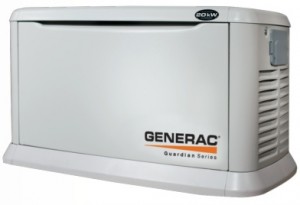Reef keeping is an imperfect science. In many cases, it’s not science at all. When an un-informed person enters an aquarium store and decides they want a home reef, any number of things can happen. Even intermediate aquarists often have a finite understanding of the biological, chemical and physical processes that make a reef aquarium function, and many know very little about wild reef ecosystems. So often, aquarists are simply winging it, trying method after method, and tossing in livestock item after livestock item. People in general, are looking for quick results and immediate satisfaction. In reality, the reef aquarium hobby is the antithesis of this, rewarding patience and long-term thinking. While I like to encourage anyone with an interest, to attempt their own reef aquarium, I believe that it’s vital to understanding some serious realities about the hobby. Over the years, I’ve watched many aquarist’s prized tanks, go from being a centerpiece to basement clutter. In an effort to both educate those considering a new reef aquarium for the first time, and refresh those aquarists currently on the ropes, I offer the following 11 hard truths.
I often find those moving from the freshwater aquariums, to marine aquariums, quiet disillusioned about costs. Everything on the marine side is more expensive, from livestock to filtration. Tanks that are pre-drilled and designed for reef ecosystems cost more, and sumps and circulation pumps all add to the massive bill a properly designed aquarium system can create. Entering the hobby, with the mindset of doing things cheaply, can often lead to long term issues. Equipment designed for the bare minimum is often inadequate, it wears down quickly, and more often than not, needs upgraded as the tank evolves. While there are lots of different additives, some do absolutely nothing, others can do more harm than good, while a select few are vital.
While a seasoned DIY’er can cut some costs by making equipment themselves, most people entering the hobby or looking to step-up their system, need to hunt for good equipment. Specialty gear, like the offerings of Eco Tech Marine, is even more money. These companies are small, and cannot mass produce products, therefore contributing to a high out of pocket cost. If the price tag, and not the reviews and recommendations of expert aquarists, is what dictates what kind of equipment you buy, a recipe for disaster could be brewing.
In the same breath, taking time to research what is needed to meet your goals, can offer a comprehensive plan, which will detail what you need, where you can save a few bucks and help make sure you are buying something that will last. Reality is, even the cheap stuff is expensive, and if a piece of gear doesn’t meet your expectations, the chance of getting a decent percentage of what you spent out of it, is slim to none. Lighting is one area that requires copious planning. Lighting systems capable of maintaining corals range in cost from a few hundred dollars to well over several thousand. Do your homework and make sure you understand exactly what you’re diving into financially. (No pun intended)
Since nearly everything for marine aquariums is powered by electricity, you can guarantee the presence of a reef aquarium(s) will impact your power bill.
 Hard Truth #2: You need lots of space
Hard Truth #2: You need lots of space
Regardless of whether you are setting up a 15 gallon nano-reef, or a 500 gallon super system, reef aquariums take up space. Yes, you can measure an area of your home and purchase a tank that will fit comfortably in that location. It’s easy to forget, that in order to be successful, you will need two small quarantine tanks, one for corals and one for fish, as well as a third hospital tank (optional). In addition to that sumps, skimmers, additives, test kits, controllers – all these essential items take up space. The term fish room really applies, as it’s often necessary to have an entire room, or rooms, dedicated to all the equipment needed to keep a reef aquarium healthy. To make matters worse, you need to factor in space and hook-ups for a RODI unit, water storage, water changes, all of these things. If your pinched for space, and you don’t want aquarium equipment eating up all your living area, it’s best to either scale down, or set aside a room of your house as a dedicated fish room.
 Hard Truth #3: Saltwater is extremely damaging
Hard Truth #3: Saltwater is extremely damaging
Water in general, is behind a high percentage of home repair scenarios. A water leak is highly disastrous and can easily, and quickly generate a massive bill. I’ve made the mistake of placing a marine tank in an upstairs room, and paid the price when it comes to leaking sumps, overflows or just water spread around during a water change. Saltwater is highly corrosive and highly conductive. It will easily destroy any electronics, and even metallic objects meant for use in marine aquariums require intense cleaning, or in time they will simply rust away. I always advise would be aquarists to check with their home owner’s insurance company, and make sure that damage caused by a marine aquarium is covered by the existing policy. Floor types, such as carpet, hardwood, engineered and laminate, simply cannot hold up to constant exposure to saltwater.
Once marine water works its way under flooring, it can easily destroy it, requiring it to be replaced. Floors such as concrete, high impact above concrete, tile and a few others, are the best options for a fish room, as they cannot be damaged by water. If something in your home being damaged by marine water is simply too great a risk, then it’s vital to either plan around that, or consider a different hobby.
 Hard Truth #4: Marine aquariums take copious amounts of time
Hard Truth #4: Marine aquariums take copious amounts of time
I’ve heard many fish shop owners tell customers that marine aquariums are low maintenance and not time consumers. This is absolute bollox. Just the testing portion of keeping a marine aquarium is highly time consuming, as most liquid tests need to set for a period of time, allowing the reagent to react. Furthermore, many test kits are multi-stepped, and require patience to fully complete. Combine this with creating marine water, water changes, top off, treating livestock, programming controllers, along with all the other necessary tasks that keep reefs healthy, and you have one heck of a commitment
 Hard Truth #5: RODI units are necessary, wasteful and frustrating
Hard Truth #5: RODI units are necessary, wasteful and frustrating
Yes, there are aquarists that have beautiful reef systems and do not use a RODI unit. Though, in my humble opinion, not only are they few and far between, this is almost an impossible feat. Public water supplies have a mix of chemicals used to purify waste water, and make it safe again. Fluoride is often added to increase the dental health of consumers. Traces of bleach derivatives, chlorine and other compounds is common. Well water can be full of organic and inorganic contaminants, and in some cases contains fecal matter. Spring water can be contaminated at any time. You need ultra-pure freshwater, and the best way to get it is by using a RODI unit.
RODI units, on average, create about 4 gallons of waste water for every one gallon of pure. If you do a weekly 20% water change on a 55 gallon aquarium (11 gallons), you will need to consume a total of 55 gallons of water to get 11 gallons of pure. If like me, you have a private septic system, this create a major burden as you are constantly filling your tank with grey water. It’s imperative to formulate a water system, which captures some (if not all) of this waste, and either disposes of it properly and makes it accessible for other applications.
To make matters worse, RODI units need both their filters and membranes changed from time to time. Membranes have a long life span, typically lasting around 3 years, but filters need constant replacement of DI resin, carbon, sediment filters, etc.
 Hard Truth #6: You need to be at least somewhat tech savvy
Hard Truth #6: You need to be at least somewhat tech savvy
Computers, smart phones, tablets and the internet have all become one with reef aquariums. For the most part, aquarists have benefitted from this union. It’s great knowing that you can monitor and control you entire aquarium from anywhere, but the set-up of this equipment isn’t always easy. Items, like an apex aquarium controller, require knowledge of networking, software collaboration and probe calibration. These are not Apple products that simply connect and set themselves up. Even modern day LED light fixtures often require internet connections and controllers, all of which depend on the user to have at least a comfortable knowledge of computer technology and networking. It’s very realistic that you could dedicate an entire computer or tablet system to the control of your aquarium, and that a high speed, wireless, and constant internet connection is required.
 Hard Truth #7: You need to be able to maintain your equipment
Hard Truth #7: You need to be able to maintain your equipment
Pumps, filters, even lighting systems are used in one of the harshest environments on Earth. Pumps alone run 24/7 in marine water, which is often filled with waste and hard particles. Stuff breaks down, pieces need replaced and the requisite to clean and rebuild equipment is a common occurrence. It’s vital to understand how your equipment works, and have the knowledge to diagnose and repair equipment failures. Learning about coral reef ecosystems is often fascinating and exciting, but researching how to repair a faulty water pump, not so much. The truth is, knowledge of simple aquarium equipment, such as understanding different styles of overflows, is just as vital as advanced scientific knowledge about reefs.
Even some of today’s top end lighting fixtures and circulation pumps can be upgraded with new lenses, circuit boards and drivers, requiring the aquarist to take apart what is seemingly complex equipment. Fostering a comfort level with tearing things open is vital, because sooner or later, something will breakdown. Certain specialty marine retailers, like AVAST marine works, sell a variety of equipment that requires complete assembly. This is a great way to learn how a product works, with detailed instructions on how to build it.
 Hard Truth #8: You will deal with livestock loss, and it sucks
Hard Truth #8: You will deal with livestock loss, and it sucks
One of the greatest wallet drainers in the hobby is livestock loss. This can be somewhat prevented by implementing proper quarantine and learning how to properly diagnose and treat marine parasites/infections. Also, making sure you house compatible species can help reduce livestock loss as well. Though, stay in the salt long enough, and you will lose livestock, whether it be a beloved coral, or favorite fish. There are many ways to lose marine animals in the home aquarium. Sometimes, they simply stop feeding and wind up dead, sometimes a favorite fish grows larger and turns on a tank mate, and sometimes fish ordered online arrive dead. Sometimes a livestock loss has made me question the industry, hobby and my own personal involvement with it.
The best way to deal with losing livestock, is looking at it from a scientific perspective. Livestock loss (unless in the case of DOA) signals an imbalance. It could be water quality, stocking, infection, etc. There are protocols to take when something dies, to try to find the culprit, though that is the subject of its own post. The simple truth, sooner or later, something you have invested money, time and emotional attachment into will die.
 Hard Truth #9: Moving and traveling become much more difficult
Hard Truth #9: Moving and traveling become much more difficult
Moving is hard, in its own right. Moving a mature reef aquarium is a tremendous undertaking. Whether you are moving a few miles up the street, or across the country, it’s tough, and presents an expensive and unique challenge. Measures must be taken to preserve the biological filter, manage fish stress and provide corals with a few creature comforts. It’s not easy, and a move that could be accomplished in few hours, or days, becomes something that requires copious planning.
If you travel often, controllers can ease a bit of the burden, but I’ve read countless horror stories of reefers who return from a trip, and find their tank in shambles. There are so many aspects of full reef tanks that can fail, and so many tiny failures that lead to disaster, any time you travel the status of your aquarium remains on your mind.
 Hard Truth #10: If you’re on the fence about having a reef tank, it’s probably not for you
Hard Truth #10: If you’re on the fence about having a reef tank, it’s probably not for you
Most people don’t understand the serious commitment that a reef aquarium involves. Many things take a back seat to your tank. Friends, other hobbies, personal commitments, all of these can interfere with the amount of time a home reef requires. Just planning for a large reef tank is a burden. Those of us who have been in the hobby for a long time, didn’t really question entering it, we simply knew that this is what we wanted, and once we were in, we were hooked. If a major concern is not having enough time to go out, or an aquarium coming before hanging out with friends, you may want to consider another hobby. Reality is, the investment into a reef aquarium can be so large, both financially and commitment wise, that keeping your tank healthy becomes a serious priority.
 Hard Truth #11: You need back-up power
Hard Truth #11: You need back-up power
Grid power is great, and depending on where you live in the world, for the most part it’s reliable. Though, it does go out. Storms, auto accidents, any number of events can knock the power out for hours, days, even weeks. Reef aquariums cannot last long without electric. Simple PC battery back-ups are good for outages lasting several minutes, but can’t help if the power goes out for several days. A gas powered back-up generator is a must, for any reef keeper. Some of these units are inexpensive, though one that will run an entire reef aquarium is likely going to cost at least several hundred dollars. The best case scenario, is to have an outdoor mounted unit, wired right into your panel box with a transfer switch. If the power goes out, you simply shut off all your circuits, fire up the generator, transfer its power to the panel box, and switch on what circuits you want powered.











0 Comments